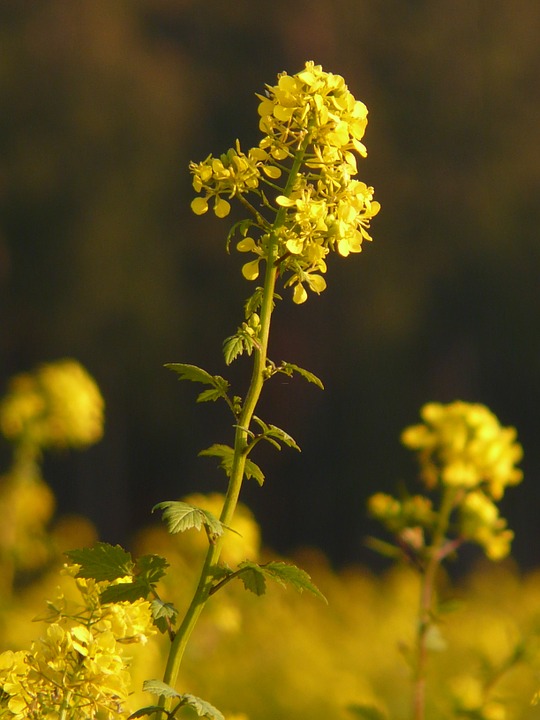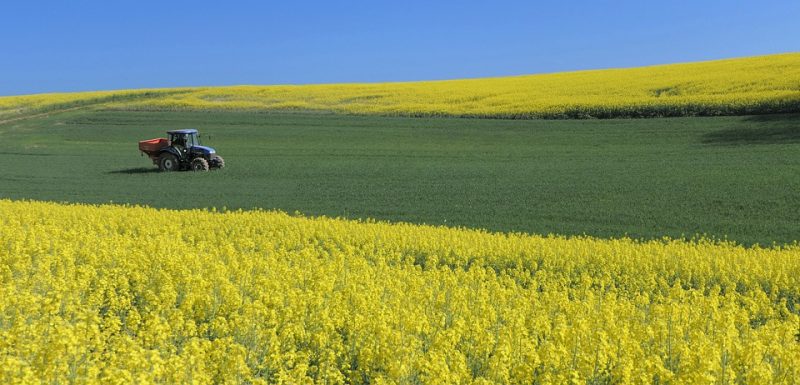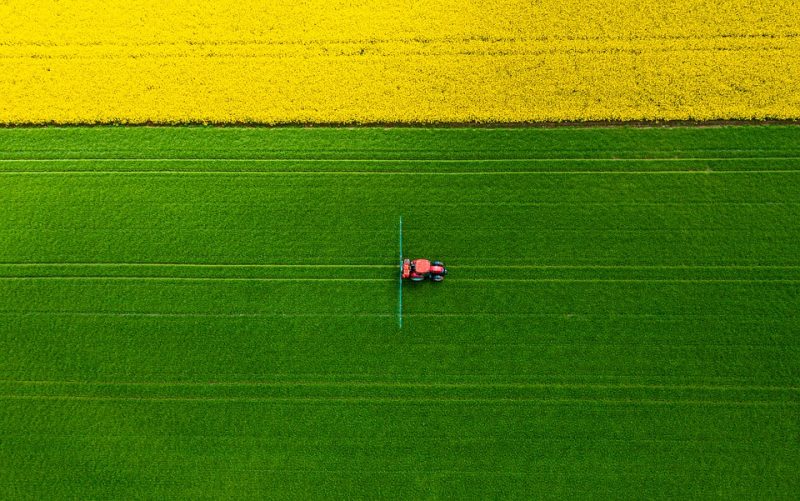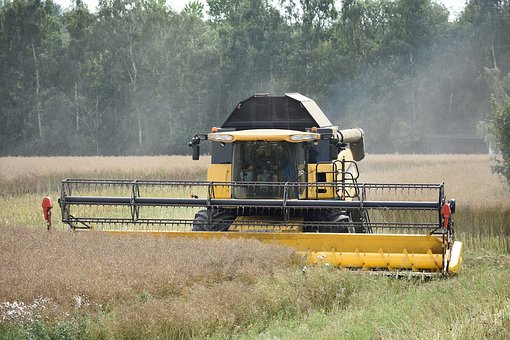Rapeseed, cultivation and harvesting technology
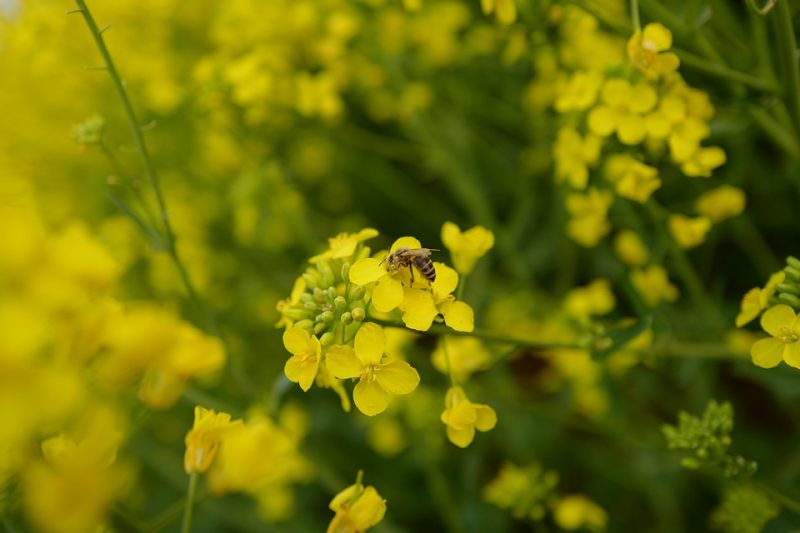
Rapeseed (Brassica napus), belongs to the Cruciferae family, genus Brassica. It occupies an important place among cultivated plants, being a rich source of vegetable oils, used in the food industry, in the biodiesel industry and it also has an important fodder value. The rapeseed crop also has a number of special characteristics: it is a good precursor plant for successive crops or for autumn cereals, it reacts positively to the application of fertilizers, it can be grown on slopes preventing soil erosion, it can be cultivated mechanically and it is a good melliferous plant.
It has a pivot root, which can penetrate into the soil to a depth of up to 70-100 cm. The stem is branched, can reach a height of 1.2-2 m, the branching being influenced by the density of the crop. The basal leaves are pinnate, with lobes with large incisions, have petioles, while the middle and top leaves are lanceolate, sessile. The inflorescence is represented by a raceme. Pollination is entomophilic (with the help of insects). The fruit is represented by a silique, and a plant can develop up to 800 siliques. The seeds are small, round, with an irregular surface.
Environmental and soil requirements
Rapeseed can be grown in temperate areas, characterized by mild winters, cool and humid summers. The sum of the temperature degrees has to be 2000-2500 °C, for the autumn varieties and 1500-1800 °C, for the spring varieties. Rapeseed requires for germination, a minimum temperature of 1-3° C. In the rosette stage, autumn varieties can withstand winter temperatures of -15 / -18 °C. During the flowering period, late rimes can negatively influence the culture.
Rapeseed is pretentious in terms of humidity. The favorable areas are those in which 450-650 mm of precipitation fall annually. The maximum requirements for water are during the sprouting-rosette formation and flowering-fruiting. Rapeseed prefers fertile, permeable soils with a medium texture.
Rapeseed crop technology
Crop rotation
Rapeseed is not very pretentious regarding the preceding plant. Good results are achieved after autumn cereals, early potatoes, peas, vetch. Rapeseed should not be grown after sunflower and soybeans, to avoid the spread of Sclerotinia sclerotiorum. It can return to the same field after 3 years, and in case of a Sclerotinia attack, it can return after 7-8 years.
Field works
It should be done immediately after removing the precursor plant from the field. This has to be followed by hoeing at a depth of 20-25 cm.
The ground has to be kept ground, loose, and clean of weeds, by using the disc harrow in combination with the spring-tooth harrow.
The seedbed has to be prepared with the help of the combine, at the sowing depth. The land must be ground and settled at the time of sowing.
Seeds and sowing
The seeds must have a minimum purity of 97% and a germination capacity of at least 85%, being indicated to use the planting material harvested in the same year. Normally, the sowing season is September 1-15. The optimum density can vary between 50-80 plants / m². The amount of seeds can vary between 6-10 kg / ha, depending on the humidity and texture of the soil, as well as the preparation of the seedbed. The sowing depth is 2.5-3.5 cm.
Fertilization
Rapeseed is a major consumer of nutrients and reacts positively to the application of fertilizers. Doses are determined through an agrochemical analysis of the soil.
Recommended products
-
You can find products on a different store
Change Store -
You can find products on a different store
Change Store -
You can find products on a different store
Change Store -
You can find products on a different store
Change Store -
You can find products on a different store
Change Store -
You can find products on a different store
Change Store -
You can find products on a different store
Change Store -
You can find products on a different store
Change Store -
You can find products on a different store
Change Store -
You can find products on a different store
Change Store -
You can find products on a different store
Change Store -
You can find products on a different store
Change Store -
You can find products on a different store
Change Store -
You can find products on a different store
Change Store -
You can find products on a different store
Change Store -
You can find products on a different store
Change Store -
You can find products on a different store
Change Store -
You can find products on a different store
Change Store -
You can find products on a different store
Change Store -
You can find products on a different store
Change Store -
You can find products on a different store
Change Store -
You can find products on a different store
Change Store -
You can find products on a different store
Change Store -
You can find products on a different store
Change Store
Diseases and pests
The main diseases that can occur in rapeseed are white mold, downy mildew, powdery mildew, Alternaria. Among the pests, the most common are the rape beetle, the red turnip beetle, the turnip sawfly, the cabbage-stem flea beetle.
Weed control
Weed control is an important measure in order to obtain quality production.
Recommended products
-
You can find products on a different store
Change Store -
You can find products on a different store
Change Store -
You can find products on a different store
Change Store -
You can find products on a different store
Change Store -
You can find products on a different store
Change Store -
You can find products on a different store
Change Store -
You can find products on a different store
Change Store -
You can find products on a different store
Change Store -
You can find products on a different store
Change Store -
You can find products on a different store
Change Store -
You can find products on a different store
Change Store -
You can find products on a different store
Change Store -
You can find products on a different store
Change Store -
You can find products on a different store
Change Store -
You can find products on a different store
Change Store -
You can find products on a different store
Change Store -
You can find products on a different store
Change Store -
You can find products on a different store
Change Store -
You can find products on a different store
Change Store -
You can find products on a different store
Change Store -
You can find products on a different store
Change Store -
You can find products on a different store
Change Store -
You can find products on a different store
Change Store -
You can find products on a different store
Change Store
Irrigation
In order to stimulate the growth of the plants and the formation of the rosette, until the beginning of winter, it is recommended to apply 300-400 m³ of water/ha. In spring, 400-500 m³ of water/ ha can be applied during the period of intense growth and fruiting.
Harvesting
In the case of rapeseed cultivation, harvesting is a process that requires special caution due to the easy shaking of the seeds. This can be done mechanically, in two phases or direct harvesting can be carried out with the help of the combine.
Harvesting in two phases consists in cutting the plants when the color of the siliques is yellow, the seeds start to turn brown and have a humidity of 25-30%. The plants are cut with the help of the vindrover and remain on the 20-25 cm high stubble until the moisture of the seeds decreases to 12-14%. After that, they are threshed with the help of the combine.
Direct harvesting is a more commonly used method and it is carried out when the siliques acquire the yellow-lilac color, the seeds are browned, and their humidity reaches 16-18%.
It is recommended to harvest in the morning, in the evening or during the night.














































































































































































































































































































































































































































